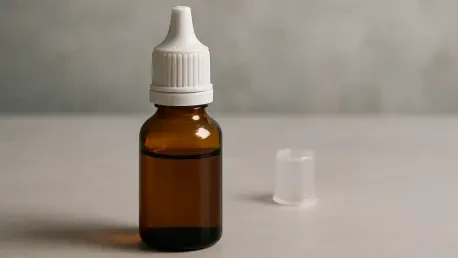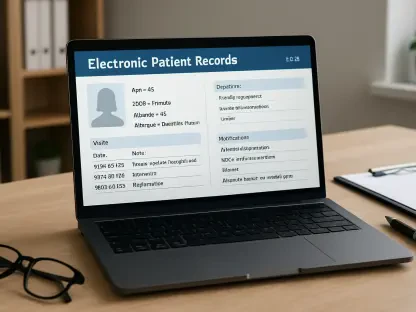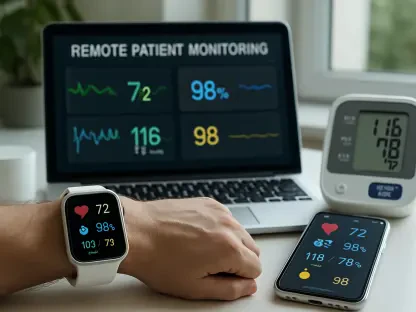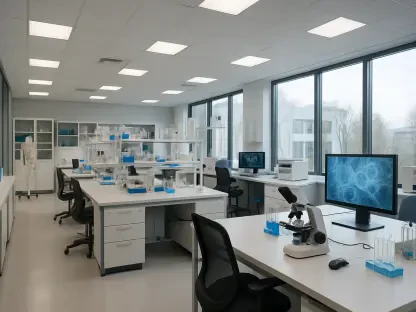In an era where childhood vision problems are becoming increasingly prevalent, a groundbreaking clinical study has emerged to tackle the rising tide of myopia, or nearsightedness, among young children, with researchers from the University of Houston and The Ohio State University leading the charge. Spearheaded by these experts, this national trial is exploring an innovative approach to delay the onset of this common eye condition using low-dose atropine eye drops. With a substantial $25 million grant from the National Institutes of Health’s National Eye Institute, the study represents a significant investment in pediatric eye care. Named “Delaying the Onset of Nearsightedness Until Treatment” (DONUT), the research focuses on children aged 6 to 11, a critical window when myopia often begins to develop. This initiative not only highlights the urgency of addressing vision health early but also raises hope for a future where preventative measures could reduce the lifelong impact of myopia on millions of young individuals across the globe.
Pioneering a Preventative Approach
The DONUT study marks a pivotal shift in how medical professionals approach myopia, moving from merely managing progression to actively preventing its onset. Targeting children who show early signs of refractive errors but have not yet developed full-blown myopia, the trial administers low-dose atropine eye drops nightly over a 30-day period. Concentrations ranging from 0.01% to 0.05% are being tested against a placebo in a randomized, quadruple-blind design involving over 600 participants. The primary objective is to determine whether these drops can delay the start of nearsightedness, a condition that typically emerges between ages 8 and 13 and worsens until around age 16. By intervening at this early stage, researchers aim to alter the trajectory of eye growth, potentially sparing children from the need for stronger corrective lenses or more invasive treatments later in life. This preventative strategy could redefine standards in pediatric ophthalmology if successful.
Beyond the immediate goal of delaying myopia, the study also seeks to quantify the reduction in incidence rates among treated groups compared to those receiving a placebo. Researchers hypothesize that the occurrence of myopia could drop from 20% in the control group to just 10% in those treated with atropine. Additionally, they predict a slowdown in pre-myopic eye growth by over 30% during the trial period. This hypothesis is grounded in prior evidence showing that children whose farsightedness diminishes to certain levels by third grade face a nearly 90% risk of developing myopia within a few years. Such statistics underscore the importance of early intervention, and the trial’s focus on pre-myopic children aims to address this risk head-on. If these predictions hold true, the implications for public health could be profound, offering a proactive tool to combat a growing vision challenge worldwide.
Understanding Atropine’s Role and Research Background
Atropine, a medication long used in eye care for various conditions, is at the heart of this innovative trial, though its application for myopia prevention is a relatively new frontier. While higher concentrations, such as 1% atropine sulfate, are FDA-approved for purposes like pupil dilation and treating amblyopia, no low-dose formulation has yet gained approval specifically for myopia control. However, extensive research over the years has demonstrated the efficacy of low-dose atropine (0.01% to 0.05%) in slowing the progression of nearsightedness once it has developed. The current study builds on this foundation by testing whether these same low doses can prevent the condition from starting altogether. This shift in focus represents a bold step forward, supported by a growing consensus among experts about atropine’s potential in vision care, especially for young patients at risk.
The collaborative effort between two prestigious institutions adds significant weight to the trial’s credibility and scope. Investigators from both universities bring a wealth of expertise to the project, uniting their resources to address a pressing public health issue as myopia rates continue to climb globally. The study’s design also includes thoughtful provisions, such as crossing over placebo participants to atropine treatment if they develop myopia during the trial, and providing annual vouchers for corrective lenses to all participants who need them, regardless of group assignment. These measures ensure ethical considerations are met while maintaining the integrity of the research. Although specific timelines for enrollment or results remain unclear, the trial’s comprehensive framework suggests a thorough approach to uncovering whether atropine can serve as a preventative shield against childhood myopia.
Shaping the Future of Pediatric Eye Health
Looking back, the DONUT study stood as a landmark effort to transform the landscape of pediatric vision care through preventative intervention. Its rigorous design, substantial funding, and focus on a critical age group highlighted a commitment to addressing myopia before it could take hold. The use of low-dose atropine in this context was a novel application, building on years of evidence about its effectiveness in slowing disease progression. Even as uncertainties about exact timelines for outcomes lingered, the trial’s potential to halve myopia incidence and curb eye growth rates offered a glimpse of hope for millions of children and their families.
Reflecting on this initiative, the next steps involve staying attuned to emerging results and supporting further research into accessible, FDA-approved low-dose atropine solutions. Advocacy for early vision screenings in schools and pediatric care settings also becomes crucial to identify at-risk children sooner. The collaborative spirit of this research underscores the value of unified academic and medical efforts in tackling widespread health challenges, paving the way for innovative strategies that could one day make childhood myopia a far less common burden.









